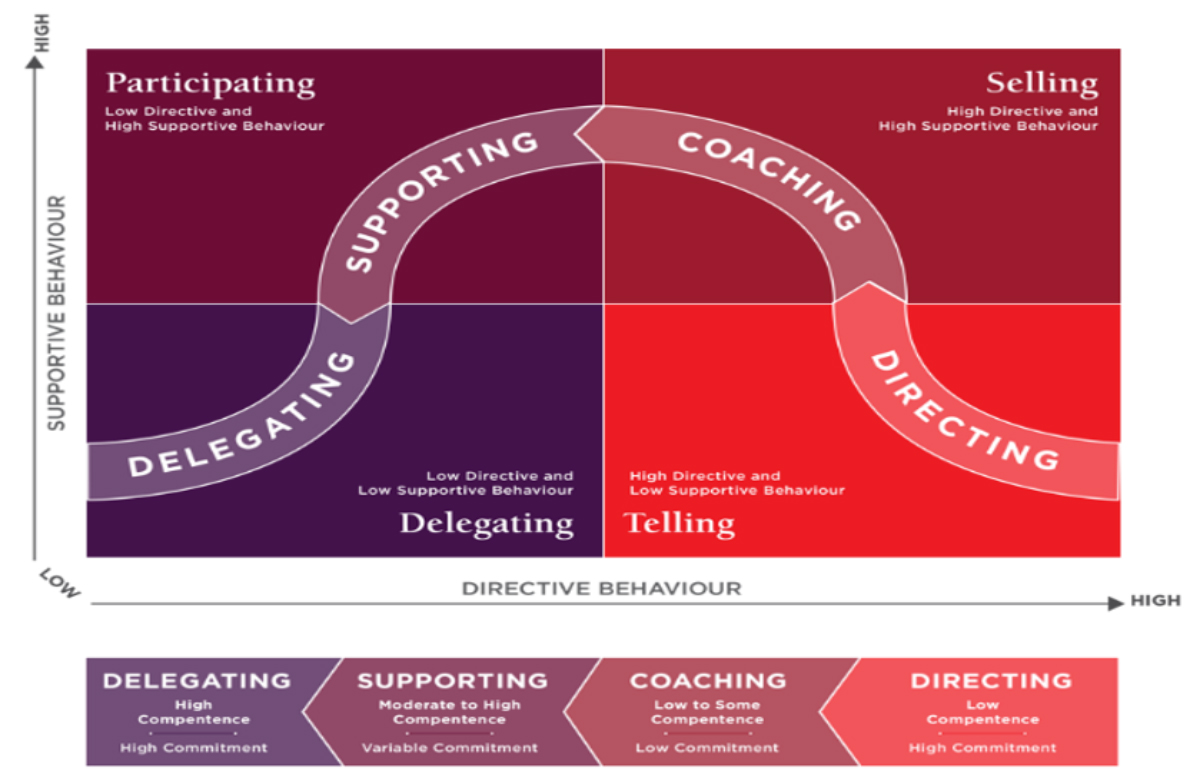Situations determine which leaders should turn up.
In 2006 I was asked to take on an interim management role, for three days a week to run the ICT department of a financial services organisation during a major transition. The brief was to be there for the management team who were very competent in the operational day to day running of the department. When I asked why I was approached to take on the role I was told it was because of my leadership style. I had a natural way of coaching others and helping them, come to their own solutions.About four weeks into the assignment, I was called into the CIO’s office and he said that we needed to have an urgent chat. He told me, that while he loved my style and that it was very helpful, but that it was not very helpful all of the time. I needed to flex my style because there were times when people just need an answer.
The pracademic in me (i.e., academic, and simultaneously being an active practitioner) jumped into action straight away to address this feedback. I remembered the Situational Leadership model developed by Blanchard and Hersey. I started to flex my style based on the situation before me and did not always go to my default style.
This leadership model encourages leaders to take stock of their team members, weigh the many variables in their workplace and choose the leadership style that best fits their goals and circumstances. In Blanchard’s own words, “In the past a leader was a boss. Today’s leaders can no longer lead solely based on positional power.”
The model suggests that as leaders we need to adapt our style / approach depending on the situation we are faced with. Hersey and Blanchard suggested that there are four primary leadership styles:
The top section of the model illustrates the four leadership styles S1 to S4:
S1: Directing/Telling Leaders define the roles and tasks of the ‘follower’ and supervise them closely. Decisions are made by the leader and announced, so communication is largely one-way.
S2: Coaching/Selling Leaders still define roles and tasks but seek ideas and suggestions from the follower. Decisions remain the leader’s prerogative, but communication is much more two-way.
S3: Supporting/Participating Leaders pass day-to-day decisions, such as task allocation and processes, to the follower. The leader facilitates and takes part in decisions, but control is with the follower.
S4: Delegating Leaders are still involved in decisions and problem-solving, but control is with the follower. The follower decides when and how the leader will be involved.
Of these four styles, no one style is considered optimal or desired for all leaders to possess. Effective leaders need to be flexible and must adapt themselves according to the situation. However, each leader tends to have a natural style, and in applying Situational Leadership they must know their own intrinsic style. In my case S2 coaching is my natural style. This awareness helped me not to fall into that default but to stop and take stock of the situation before me.
The right leadership style will depend on the person being led – the follower and the situation that they are dealing with. Blanchard and Herse extended their model to include the development level of the follower. They stated that the leaders chosen style should be based on the competence and commitment of their followers.
They categorised the possible development of followers into four levels. The bottom section of the model illustrates these four levels D1 to D4.
D1: Low Competence, High Commitment – They generally lack the specific skills required for the job in hand. However, they are eager to learn and willing to take direction.
D2: Some Competence, Low Commitment – They may have some relevant skills, but will not be able to do the job without help. The task or the situation may be new to them.
D3: High Competence, Variable Commitment – They are experienced and capable, but may lack the confidence to go it alone, or the motivation to do it well or quickly.
D4: High Competence, High Commitment – They are experienced at the job, and comfortable with their own ability to do it well. They may even be more skilled than the leader. Development Levels are also situational. I might be generally skilled, confident, and motivated in my job, but would still drop into Level D1 when faced, say, with a task requiring skills I do not possess. For example, many managers are D4 when dealing with the day-to-day running of their department but move to D1 or D2 when dealing with a sensitive employee “issue”.
Leadership styles can be matched with maturity levels. The Hersey-Blanchard model suggests that the following leadership styles are the most appropriate for these maturity levels:
- D1: Low Competence, High Commitment – Directing /Telling (S1)
- D2: Some Competence, Low Commitment – Coaching /Selling (S2)
- D3: High Competence, Variable Commitment – Supporting / Participating (S3)
- D4: High Competence, High Commitment – Delegating (S4)

In conclusion what do we learn from the Situational Leadership model?
There are a number of takeaways from reviewing this model. The first one is that each situation is different. Before I became aware of this model, I would have thought each person / follower is different. Based on that, I thought you would have to adapt your leadership style based on the individual. The key learning for me with this model is that the most appropriate style to use, should be determined by both the individual and the actual task at hand. You might be in the S4 delegating style for many tasks, but then there is one task where the person does not have the skill set and or the confidence to carry out that task and you as the leader need to move into the S1 style of directing / telling.
